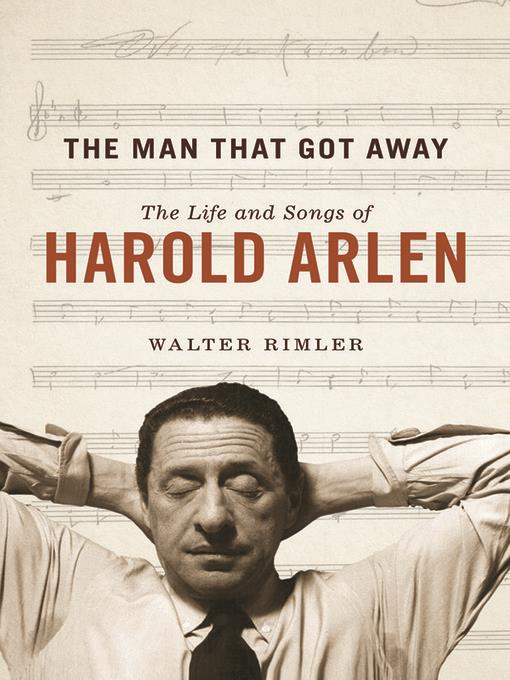
The Man That Got Away
The Life and Songs of Harold Arlen
کتاب های مرتبط
- اطلاعات
- نقد و بررسی
- دیدگاه کاربران
نقد و بررسی

October 5, 2015
Harold Arlen is likely not a household name, nor is he remembered today outside of certain musical circles. Music historian Rimler (George Gershwin) remedies this neglect in this sometimes pedestrian but often deeply illuminating and moving biography of the man who gave us "Over the Rainbow" and "Stormy Weather." Drawing on interviews with Arlen's friends and fellow musicians, Rimler traces Arlen's life from his childhood as the son of a cantor in a Buffalo synagogue and his early love of jazz and dance bands to his marriage to Anya Taranda and his collaborations with Yip Harburg and Ira Gershwin, among others, as well as the rise and decline of the musical culture in which composers like Arlen flourished. Rimler follows Arlen's slow and patient ascent to the pinnacle of success with the composition of "Over the Rainbow" for The Wizard of Oz, a song initially cut from the movie but one that Judy Garland so well made her own that listeners think of it as her song, not associating it with Arlen. As his wife slides slowly into the inferno of madness brought on by a brain tumor, Arlen himself descends into the hell of alcohol abuse, from which he recovered, though never to achieve the height of his early success. Rimler's study ensures that Arlen's story and his contributions to music will not be forgotten.

August 1, 2015
Rimler's (George Gershwin) latest addition to his growing bookshelf on American song composers presents an endearing yet clear-eyed assessment of Harold Arlen (1905-86), whose self-effacing behavior and desire for privacy made him less well known than his contemporaries, while his songs, ranging from "Over the Rainbow" and "Stormy Weather" to "Blues in the Night" and "Get Happy" assure his immortality. Arlen used composition to escape domineering parents, a stifling home life with a sickly wife (the chorine Anya Taranda), the travails of alcohol, and a fickle public. The author draws on archival materials and interviews to create a complete view of Arlen's rise from humble circumstances in Buffalo, NY, to his moving seamlessly between Hollywood film scoring and New York's nightclub circuit while working with outstanding lyricists including Johnny Mercer and E.Y. "Yip" Harburg; sadly, sustained success on Broadway eluded him. Charming photographs and a useful index enhance the volume. VERDICT While Edward Jablonski's two Harold Arlen volumes from 1961 (Happy with the Blues) and 1996 (Rhythm, Rainbows, and the Blues) remain essential, little else has been written about Arlen. Rimler's effort complements and updates these titles. Suggest for lovers of the great American songbook and for anyone who ever dreamed beyond the confines of practicality.--Barry Zaslow, Miami Univ. Libs., Oxford, OH
Copyright 2015 Library Journal, LLC Used with permission.

























دیدگاه کاربران